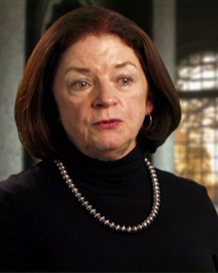
Elizabeth Norman
Elizabeth Norman, Ph.D., is a historian, teacher and best-selling author who has spent her career telling the stories of nurses and female soldiers during war. Her books include: Women in War: The Story of Fifty Nurses Who Served in Vietnam
QUESTION: Starting with the Civil War, who is Dorothea Dix and what did she do?
BETH: Dorothea Dix was in charge of the sanitary commission in the Civil War and that was a
precursor to what would now be the Nurse Corps. She was a prominent woman, a wealthy
woman, and a formidable woman, a good choice to lead this new type of formal military
relationship with nurses.
QUESTION: During the Civil War, which was nasty, a lot of these nurses were close to the
combat.
BETH: They were. The battlefields in those days, take Gettysburg, there was no rear area, per se,
every area was subjected to the sounds, the noises and the fears of combat. And that’s important
to remember about the Civil War because when we talk about it we tend to talk about the North
and the South, the Union and the Confederacy. Well, there were nurses on both sides serving
their country and serving their soldiers and serving the families and their neighbors. There was
another aspect to Civil War nursing that a lot of people aren’t aware of and that there were
hospital ships in the Civil War that plied all the main rivers. One of the more famous ships was
taking care of by nuns. We talk about military nurses, but in the 19th century, we have to
remember, and earlier, that it was nuns that provided a lot of the nursing care.
QUESTION: A battlefield hospital in those days must have been pretty horrific, what might that
look like?
BETH: If you can imagine, and I’m just going to refer to Gone With The Wind, there’s a scene
in Gone With The Wind at the Atlanta train station where the camera starts off with one casualty
and then pans out, that’s what the battlefield hospitals look like, in the North and the South,
depending on the size of the battle. There were no antibiotics there, anesthetic was really not
being used, amputation was the treatment of the day for musket wounds and it was done without
anesthesia and often the men died from the hemorrhaging of the surgery or the infection. We
had no idea that when someone’s hit with a musket or a cannonball the dirt flies into the wound
too and dirt is often contaminated. So, these men who were wounded did not stand much of a
chance in terms of surgery. And there was no medical care, there was rest, but even the idea of
hygiene, sanitation, was just starting to take hold after Florence Nightingale had been in the
Crimean War in the 1850s. So, rudimentary as you can imagine, no pain medication, you had
whiskey, that was about it.


